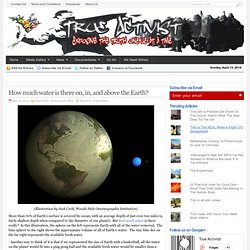

The beautiful and mysterious Fukang pallasite meteorite. By Lyle Brennan Published: 15:45 GMT, 14 April 2012 | Updated: 15:45 GMT, 14 April 2012 When it slammed into the surface of Earth, there was little sign of the beauty that lay inside.

But cutting the Fukang meteorite open yielded a breathtaking sight. Carter Emmart demos a 3D atlas of the universe. How much water is there on, in, and above the Earth? (Illustration by Jack Cook, Woods Hole Oceanographic Institution) More than 70% of Earth’s surface is covered by ocean, with an average depth of just over two miles (a fairly shallow depth when compared to the diameter of our planet).

But how much water is there really? In this illustration, the sphere on the left represents Earth with all of the water removed. The blue sphere to the right shows the approximate volume of all of Earth’s water. The Tunnel Of Trees. The Experience and Perception of Time (Stanford Encyclopedia of Philosophy) - StumbleUpon. What is ‘the perception of time’?

The very expression ‘the perception of time’ invites objection. Insofar as time is something different from events, we do not perceive time as such, but changes or events in time. But, arguably, we do not perceive events only, but also their temporal relations. So, just as it is natural to say that we perceive spatial distances and other relations between objects (I see the dragonfly as hovering above the surface of the water), it seems natural to talk of perceiving one event following another (the thunderclap as following the flash of lightning), though even here there is a difficulty.
For what we perceive, we perceive as present—as going on right now. Creeper_trail.